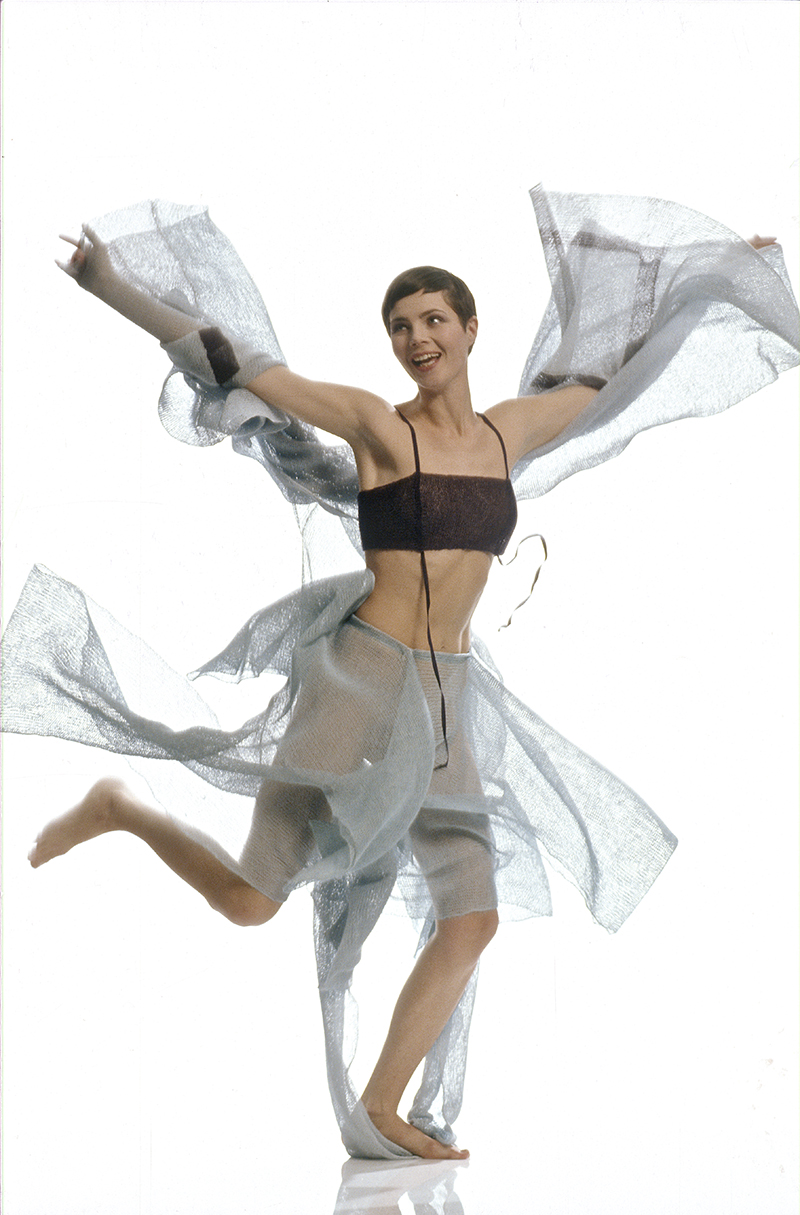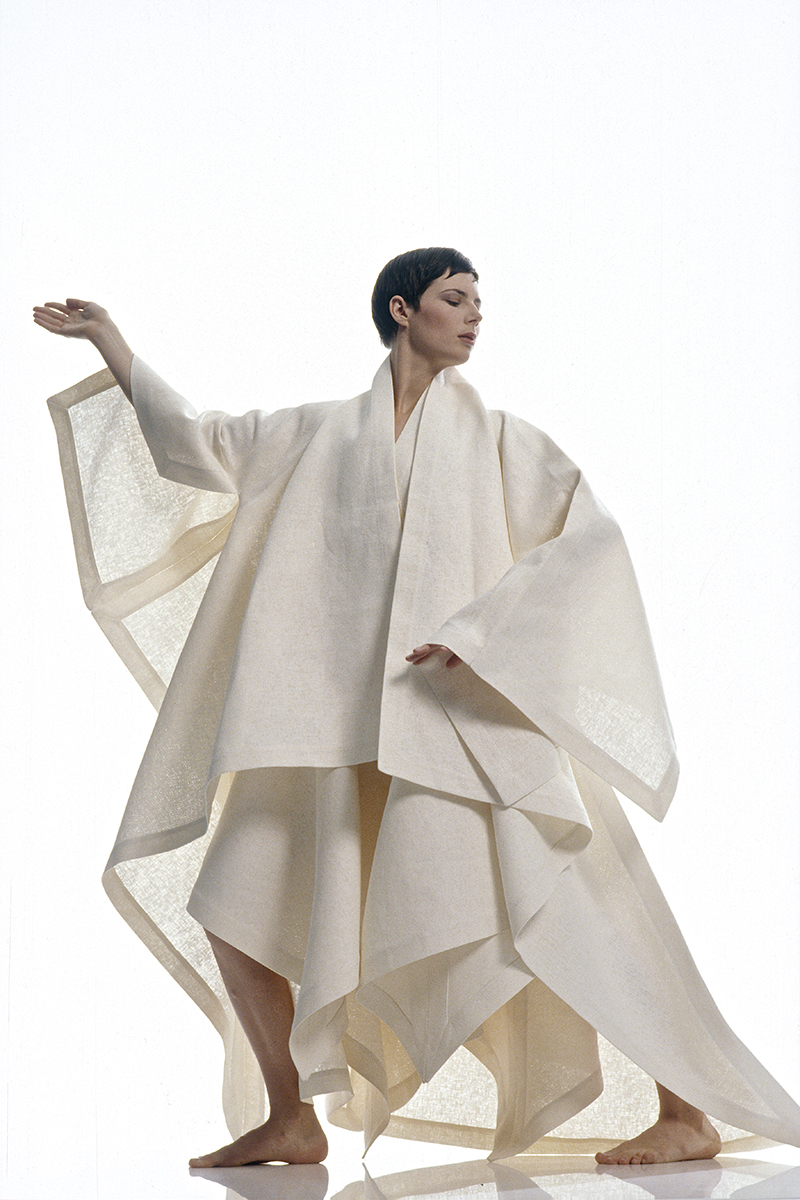Papermoon
Project Papermoon by Grethe Wittrock & Ann Schmidt-Christensen
The work of Grethe Wittrock and Ann Schmidt-Christensen has been exhibited in galleries and museums throughout the world including Copenhagen, London, Munich Paris, Sao Paulo and Kyoto. Their project Papermoon exists both as functional wearable garments and as one-off conceptual pieces which question and challenge what textiles and clothing are and can be. Displayed, they can appear as two-dimensional planes, taking on a separate identity as three-dimensional forms when embodied.
This collaboration successfully demonstrates a sensitivity to both Occidental and Oriental cultures ensuring their work has a universal appeal. This began when Grethe Wittrock studied in Kyoto and became aware of the area’s enormous textile tradition ( Kyoto is a city renowned for its textiles and kimonos can still be seen being worn in the streets ). Grethe Wittrock and Ann Schmidt-Christensen trained at the Danish design school (the former as a textile designer and the ladder as a fashion designer).
Influence from the Orient manifests itself not only in the choice of paper as a material but also in the cut of the garment. In Japanese woven textiles, paper has been traditionally used in the weft to create coiled paper which creates a cloth with a unique appearance and handle. Handmade Japanese paper is also used for shoji (paper sliding doors/screens) which allow light to filter through while providing privacy.
Grethe wittrock continues these traditions of working with paper and exploits various methods of construction and surface treatment. She weaves and knits finely slit paper yarn to create stable structures which are lightweight, translucent, have a soft, ethereal quality and create a wonderful “rustling” sound when worn. Surface treatments include the use of heat-reactive dyes, silk-screen printing and perforation.
Paper can possess many different characters in terms of look, touch and performance. It can be flexible, sensual, fluid and draped when knitted and when tightly woven it can be stiff, crisp and hold definite folds or a shape. The paper cloth is a completely natural product, it does not fray, so edges and seams do not require finishing, and it is strong, provides insulation, is stain resistant, recyclable and can be washed ( 30 degrees ) and even ironed. It is a versatility which still attracts both Grethe Wittrock and Ann Schmidt-Christensen to continue their exploration after working together with paper since 1993.
Recent works also shows the combination of paper with other yarns. An example being from their Jeune Couture collection where paper yarn is woven with mohair and wool to create beautiful garments which are simultaneously experimental and sophisticated.



Ann Schmidt-Christensen takes the paper textile created by Grethe Wittrock and works with it to make minimal, elegant shapes which pay homage to the kimono where the width of the fabric determines the proportions of the garment. The shape is pared down to its essence, showing off the paper fabric to the maximum and illustrating this design duo’s complete understanding of their chosen material. Simplicity, purity and a respect for materials is intrinsic to Japanese craft and their work links East and West by celebrating the inherent properties of paper ( some areas are softly translucent, and overlaid areas exploit varying opacities ) and accurately balancing material, technique and form. The geometric cutting often resembles origami and contrasts well with the human form.
Inspiration for their work comes from a wide variety of sources which include the urban environment, the universe and human beings continual search for knowledge and understanding, and more recently wild Nordic animals. They aim to communicate a message or a concept of their view on the world. A combination of tradition and technology their work has a reverence for the past while alluding to the future. They comment on an ever diminishing world in their creation of a challenging and powerful aesthetic.
The display of their work is often without the usual mannequins or props enabling it to be viewed as pure abstract form. In addition project Papermoon possesses a duality where it exists as wearable stylish and functional garments; thus completing their vision.
—
© Sarah E. Braddock.July 2000
Textile Lecturer, Writer and Curator